
Anyone can write an ebook. But not everyone can write an ebook that gets
read. That’s a big problem since ebooks have the highest conversion rate in written content, according to
GetResponse’s Best Lead Magnets Study.
In this article, I’ll tell you how to write an ebook that’s read from cover to cover and entices action from your
target buyers.
Nine steps. Let’s get into it!
Step 1: Conduct (Or Review) Audience Research To Land On A Topic For Your Ebook
Any high-converting content—whether a
newsletter or an ebook—starts with topic selection. And topic selection begins with
understanding your audience’s pain points. Why? Because you don’t want to waste all your time writing an ebook that doesn’t move the needle for your target reader.
You might already have a robust buyer research process. If so, review it and check what your target readers care about and would find beneficial. If you don’t have any data on your customers, there are many ways to conduct
audience research:
- SEO keyword research using tools like Moz or Ahrefs
- Asking your buyers what they are struggling with using surveys or polls
- Revisiting your most lucrative piece of content to see if you can go more in-depth
- Using social media, forums, or tools like Answer The Public to track what your audience is searching for
Surveys get extra points because you can also ask customers how much they’d be willing to pay for your ebook (if it’s paid), what specific questions they need answers to, and what expertise they already have on the topic. For instance,
see how Steph Smith gauged interest in her ebook, Doing Content Right, using Twitter:
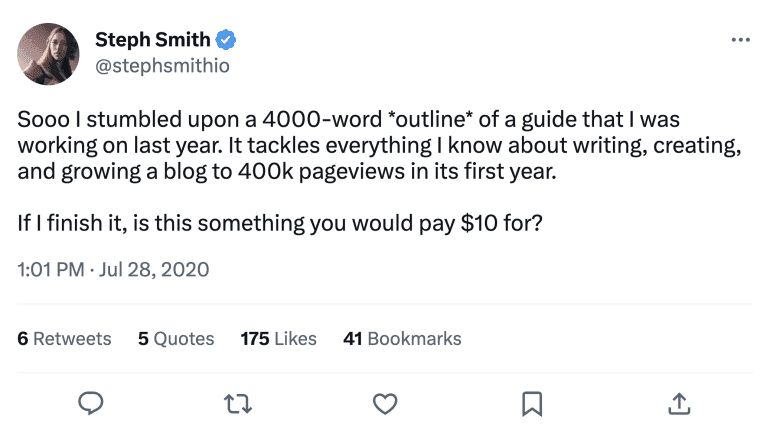
Check out more from Step Smith on
Twitter.
The result? Pre-sales totaling
411 orders for $10,120 before launch. In this case, she produced something her audience truly cared about and wanted— so much so they were willing to purchase before release.
Don’t make this mistake: Doing audience research means finding a topic that—
a) Your target customers care about
b) Can organically imbibe your product
c) You have solid expertise in
The high-converting ebook topic is the golden spot meeting all three criteria.
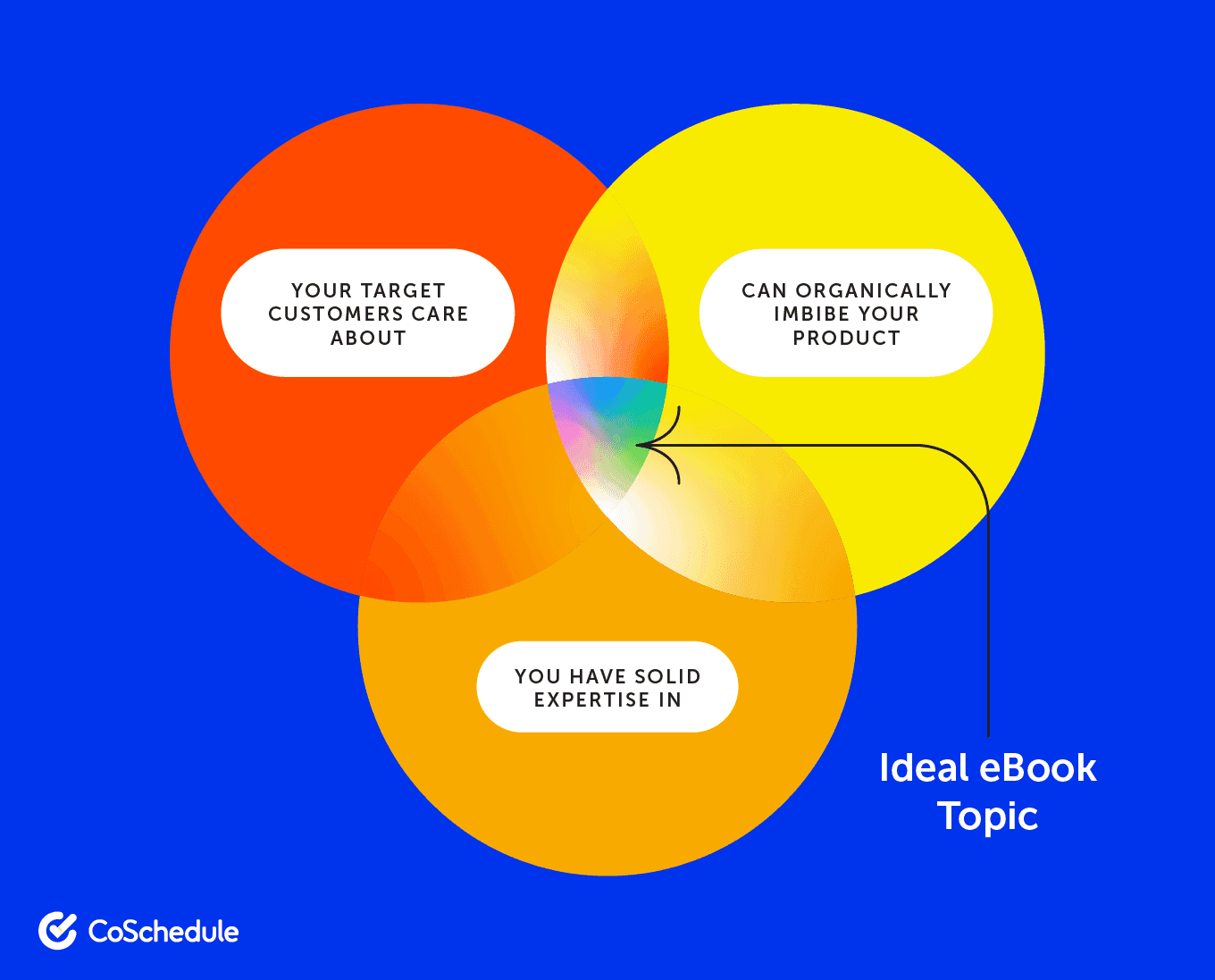
Don’t aim to solve customer problems you have no expertise in (it’ll show) or something your product/service can’t help with (it won’t convert readers to buyers).
With your topic decided, it’s time to brainstorm some headlines.
Step 2: Choose An Ebook Title That Scratches The Itch Of Your Target Readers
The title can make or break your ebook conversion rates. What would you rather read:
“How to write an ebook” or “9 steps to writing an ebook that converts readers to buyers”?
The latter one just has a nice ring to it, right?
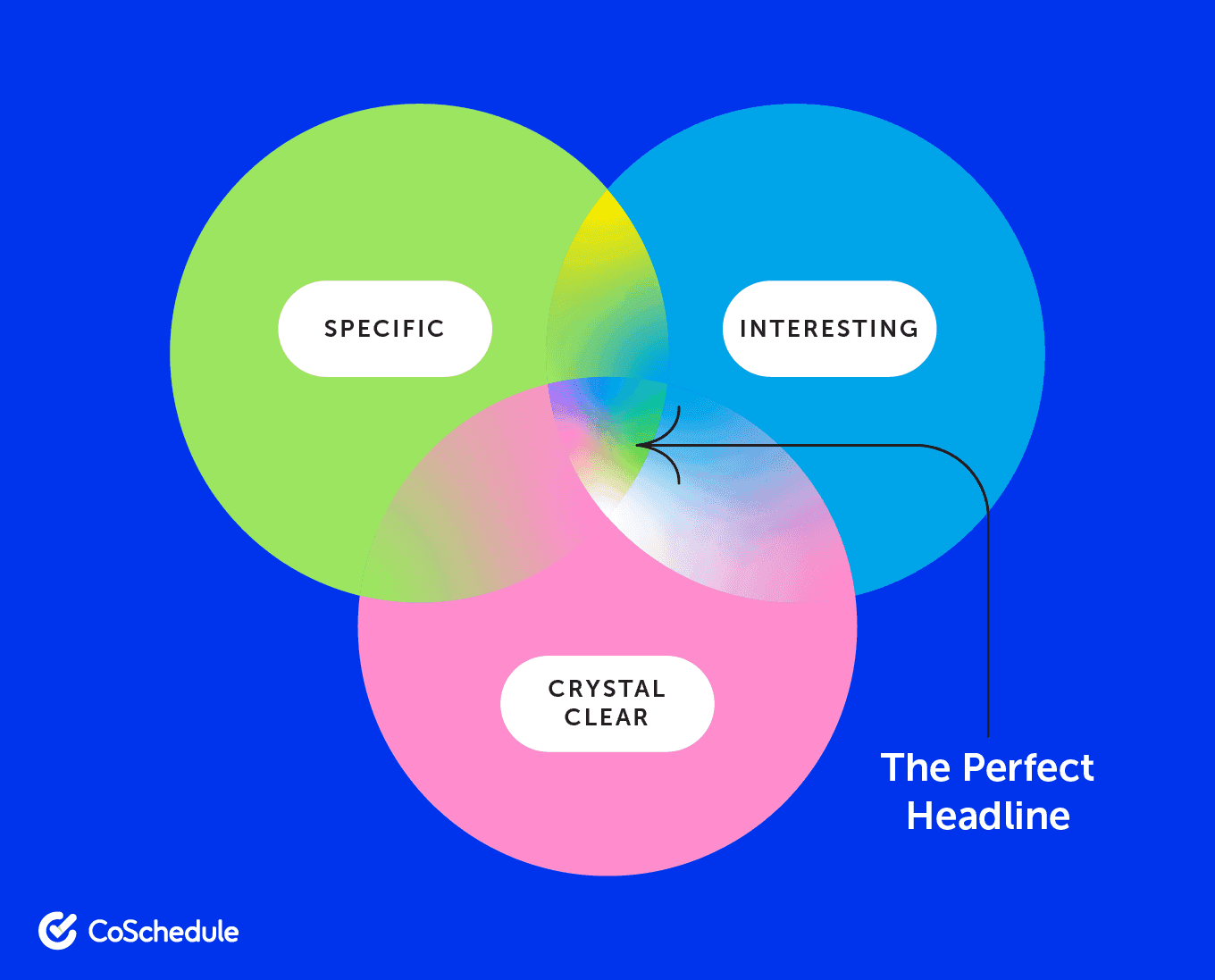
The perfect headline is:
- Specific: Your reader should think, “this is made for me!”
- Interesting: It leverages the curiosity gap by teasing what’s inside
- Crystal clear: Don’t try so hard to be clever that you miss the point.
For example,
this sales ebook by Gong titled, “The data-backed guide for closing complex 6-figure deals,” checks all the boxes.
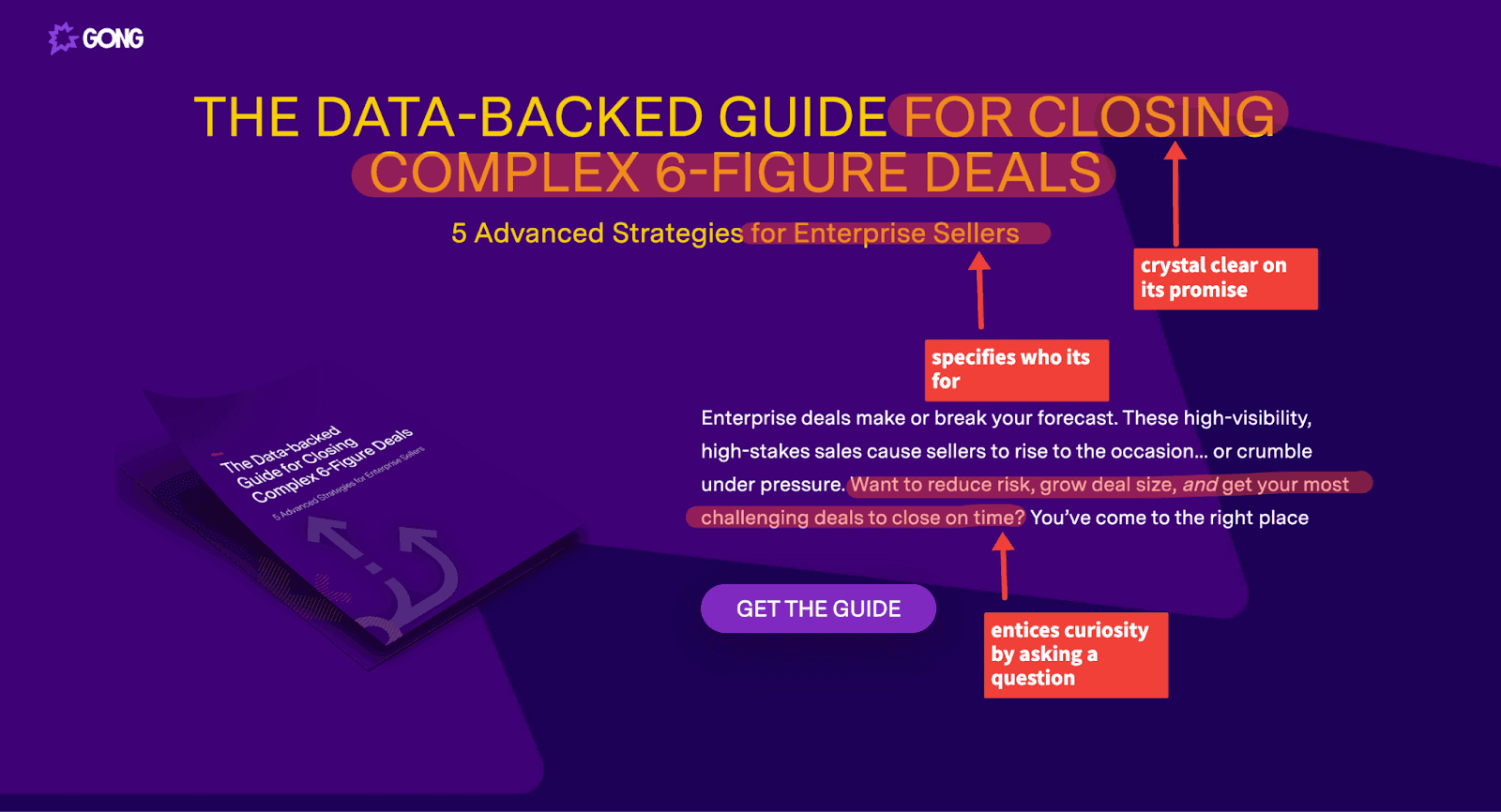
But
writing a compelling headline is no piece of cake. I’ve written plenty of ebooks without a hiccup but pulled my hair out trying to write its perfect title. After all, it's the headline that determines whether or not you get an exclusive spot in your customer’s inbox. There’s immense pressure to get it right.
Enter a saving grace:
CoSchedule’s Headline Analyzer. This tool gives a score to your headlines based on word and character count, headline type, word balance, skimmability, clarity, and so much more.
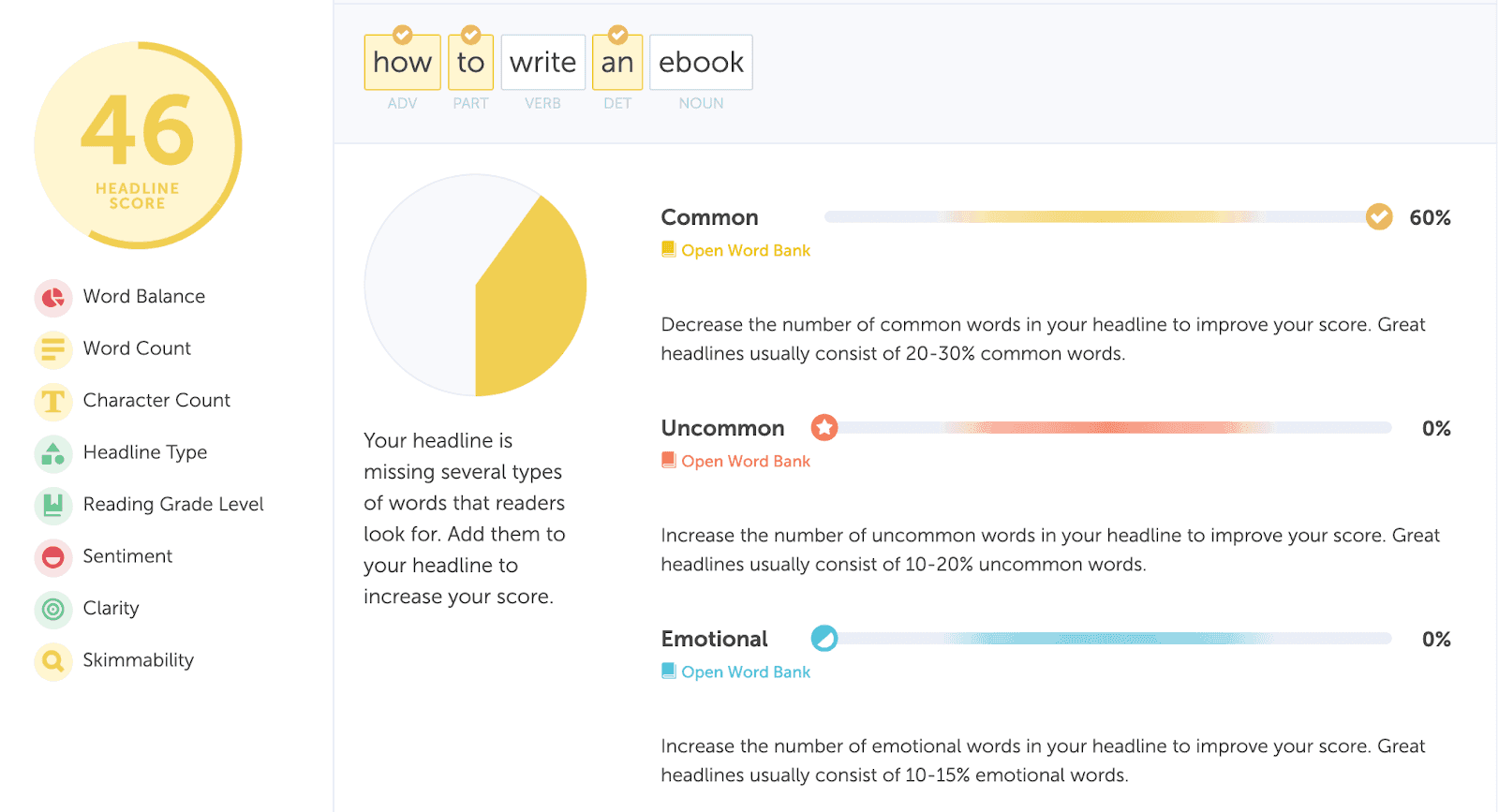
The best part? There’s a word bank for every kind of word you’d need within the tool.
With your topic and headline under your belt, it’s time to dive into the contents of your ebook.
Step 3: Organize Your Ebook Into Chapters For Easy Skimming
Neat organization is at the core of every piece of content—whether that’s an
about page, a blog, or even a
press release.
Decide how much scope you want to cover in your ebook. Is it the first of a series laying the groundwork? Or is the ultimate guide for a topic from end-to-end, 30 pages long? Maybe it’s somewhere in the middle.
Whatever you decide, divide the scope into chapters—each covering one sub-topic in detail. Think of these various sub-topics as branches of your ebook. For instance,
this Workstream ebook on hiring hourly employees is divided into five neat sections.
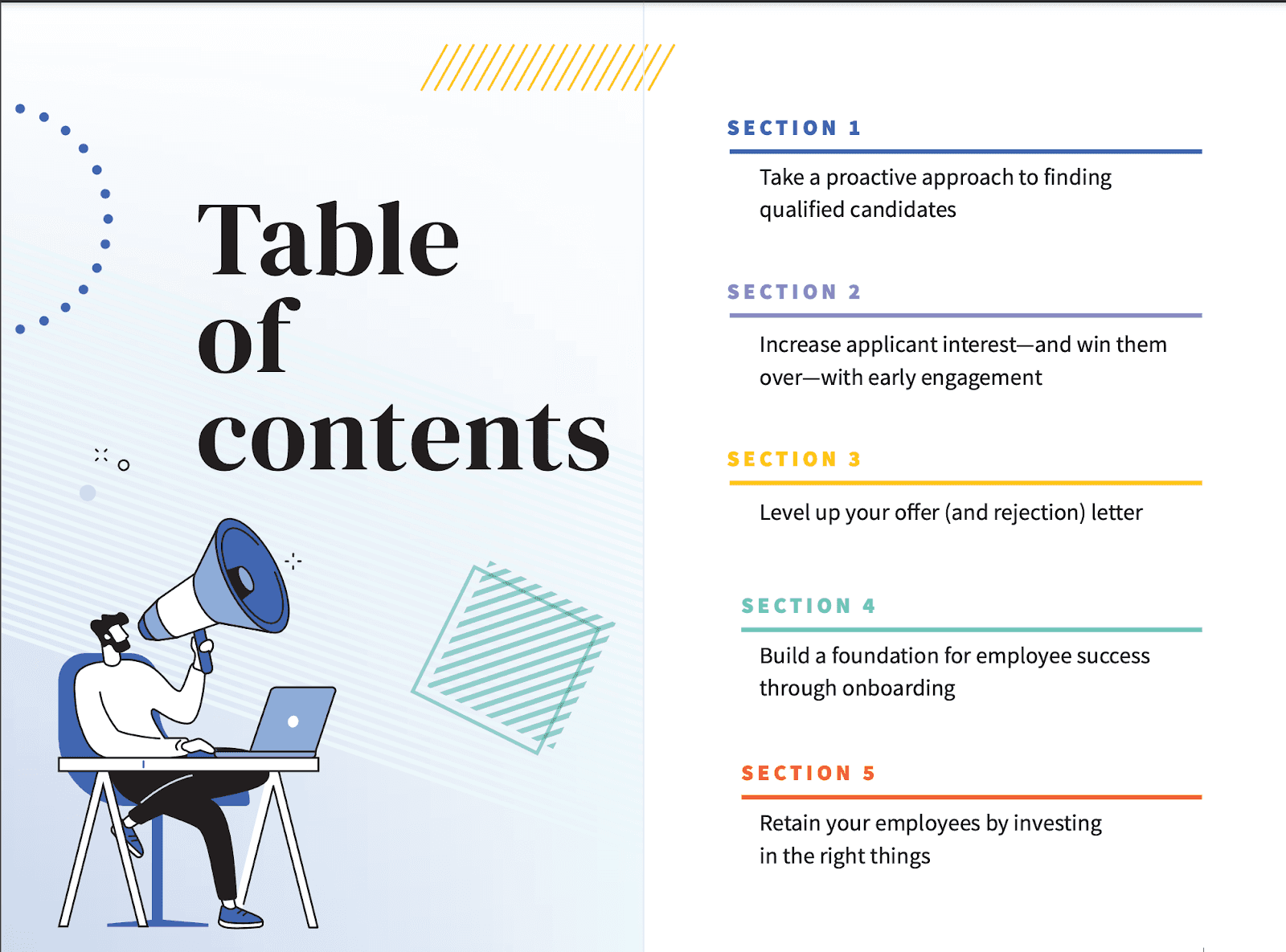
The chapters you choose lay the groundwork for your table of contents, enabling your readers to skim through and find precisely the bits they’re looking for.
Organizing your ebook into chapters also helps
you get direction on how to proceed and tackle the project section by section.
Step 4: Outline The Contents Of Each Chapter With Existing & New Content
It’s time to nosedive into creating your ebook.
The first step: Outlining what will go inside each chapter.
Why not just start writing? Because an
outline will ensure you stay on track instead of getting lost along the way. It also makes the task less daunting because you aren’t staring at a blinking cursor on your Google Doc.
How to create an outline? Begin by drafting the headings and subheadings of what will go into each chapter. For example, while writing this article, I first outlined the nine steps as H2s, along with the introduction and the conclusion.

Next, start filing content inside your H2s and H3s. You might find you can recycle some old blog post content to fit into a section. Kinsta regularly does this—for example, they used the
blog content about WordPress security in their
Securing Client Sites ebook.
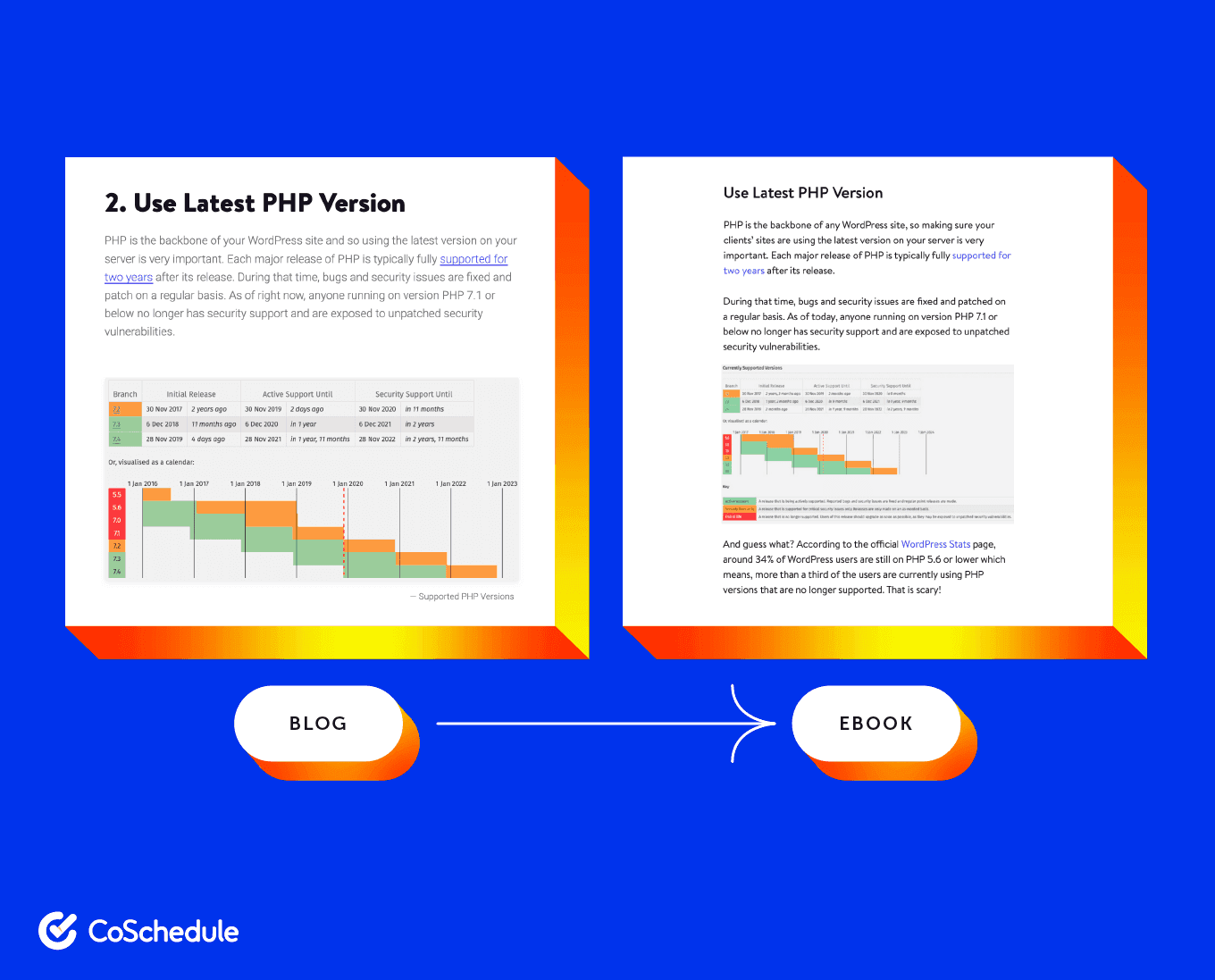
You can easily
repurpose any piece of content you have for your ebook:
- Maybe you created a whitepaper that contains customer interviews you can pull from
- Perhaps you have a podcast that contains invaluable thought leadership snippets to imbibe into your ebook
- Maybe you have a high-performing blog post on the same topic that contains important nuggets of wisdom
If you have an extensive content library you’ve built for years, you might be able to create an ebook just by compilation and no new content.
But there is a possibility you might need to venture outside and do new research if you don’t have existing filled-to-the-brim published content. Maybe you need to speak to more customers. Perhaps you need to find data to support your argument. You might need to talk to your in-house team members to
add your unique point of view to the ebook. Whatever it takes, ensure you have content inside the H2s and H3s of each chapter to finish your outline.
Remember: Treat your outline as a dump doc. You can copy-paste things, forget about complete sentences, and kick any “writing rules” to the curb. Your outline doesn’t have to look pretty. It just has to provide you with a structure to work off of.
Step 5: Write Your Ebook’s First Draft Fast
Once you’re armed with an outline, you’re ready to write the ebook. If you’ve made a thoroughly detailed outline in the previous step (which I recommend), writing the first draft will involve only connecting the dots.
A big mistake I used to make was editing
while writing. It made the process cumbersome and lengthy—and I had to go back to editing later anyway. Trying to make a flawless first draft is a waste of time.
Your first draft isn’t supposed to be perfect. The more time you spend
editing your ebook after you complete the draft, the better. Get the first draft out of your system fast and move on to the next step.
Step 6: Infuse Visuals, Data, Quotes, & Your Product To Breathe Life Into Your Ebook
How to write an ebook that gets read? Besides excellent content, many other elements decide whether your ebook will rot in your customer’s inbox or get scoured from cover to epilogue. Look at your first draft and examine it:
- How visually engaging is your ebook? Have you represented data in an image format? Can you add more product screenshots or photos of thought leaders?
- How data-backed or thought leadership driven is your ebook? Can you add more statistics or expert quotes to make your ebook stand out?
- Have you weaved your product and its features naturally into the ebook without sacrificing content quality? Are there any missed opportunities for your product to chime in?
Add what you think is missing. Don’t be afraid that you’ll come across as salesy if your product genuinely fits in and solves the problem for your customers. For example, Alloy has a whole section on why it’s an essential e-commerce automation platform in its
automation playbook.
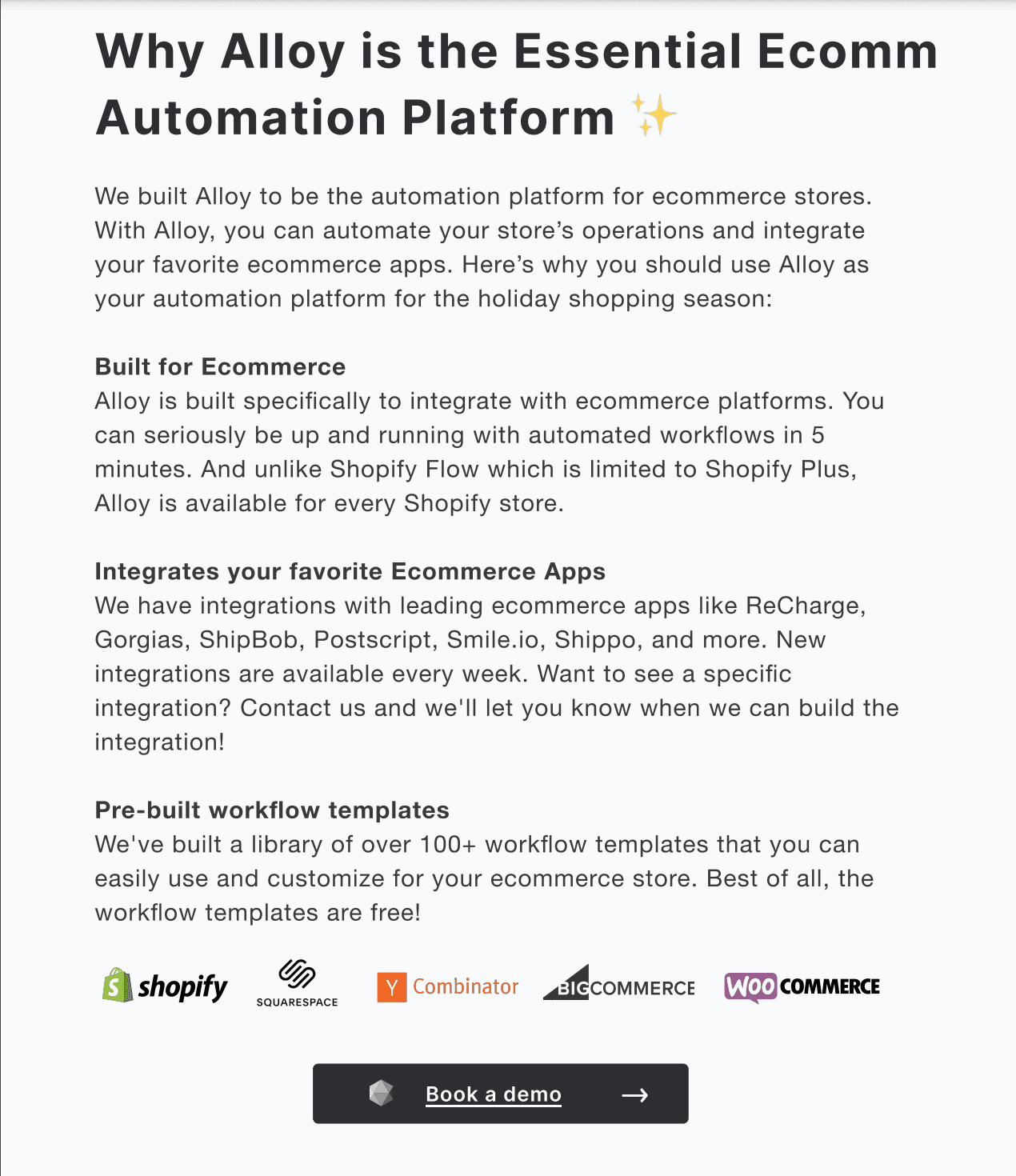
If you’re missing visuals,
work with a designer or use tools like
Canva to
create graphics on your own (it has tons of ebook templates for your cover design too). Remember to infuse your brand colors into it and employ some
color psychology to keep readers glued to your ebook.
A
visually engaging ebook filled with images, data, and expert insights will always triumph over a bland ebook with amazing content but none of the extra elements. Your buyers are visual creatures who want a treat for their brains
and their eyes.
Step 7: Edit Your Ebook To Polish & Refine It
There are three rounds of edits you should do for your ebook:
- Developmental edit: This type of edit is the overarching edit to ensure your ebook aligns with the topic. It involves asking questions like: Do you meet your customer’s needs and answer their questions? Do you fulfill search intent? Do you cover enough scope and have a unique perspective to make this ebook valuable?
- Copy edit: This type of edit tightens the ebook, so each sentence adds value. Eliminate any fluff and sections that don’t add to your argument. This is also the stage to ensure each section flows smoothly to the next and your ebook delivers on all the promises it made.
- Proofreading: This type of edit is about running a fine-toothed comb through your ebook and ensuring no spelling, grammar, or other formatting discrepancies. Tools like Grammarly and Hemingway (or making your own checklist) can help here.
Once your ebook has content and visuals, tighten the nuts and bolts by converting it to an ideal format.
Ebooks are often available in various file types. If you need to send it to your customer’s inbox, convert your document into a PDF. Google Docs has the
option to do this directly.
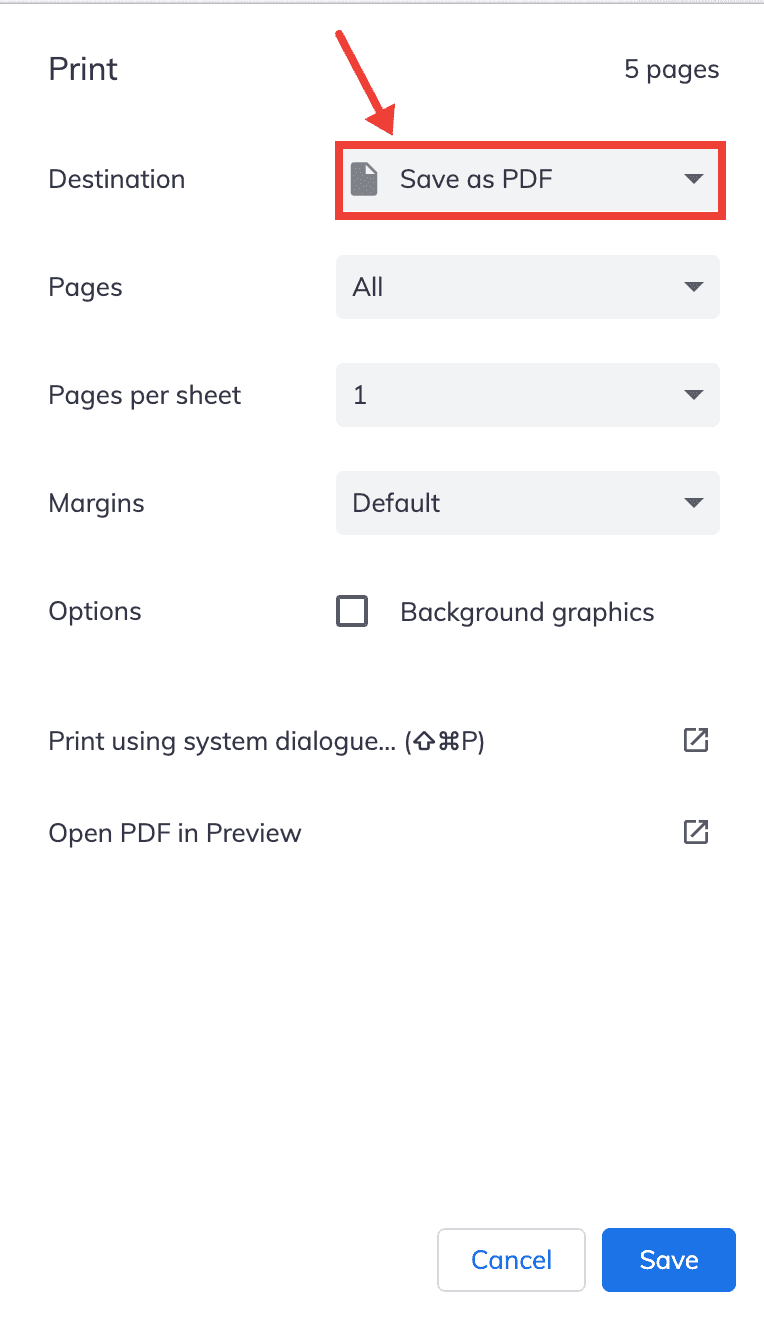
However, if you’re giving readers an ebook for their Kindle or other e-reader devices, it’s best to convert it to a MOBI and EPUB format using
Convertio.
Step 8: Create Your Ebook Landing Page To Host Your Ebook
It’s not necessary to share your ebook via a landing page, but it’s the most convenient. You can redirect all the interested parties to it, do the heavy lifting of advertising via
excellent copywriting, and track all the downloads.
A
landing page should have copy and visuals that make it
irresistible to download the ebook. Hit your customer’s pain points, use social proof, tease what’s inside, and add a ton of visuals to hit the nail on the head. Katelyn Bourgoin’s
Review Mining Playbook landing page is a perfect example.
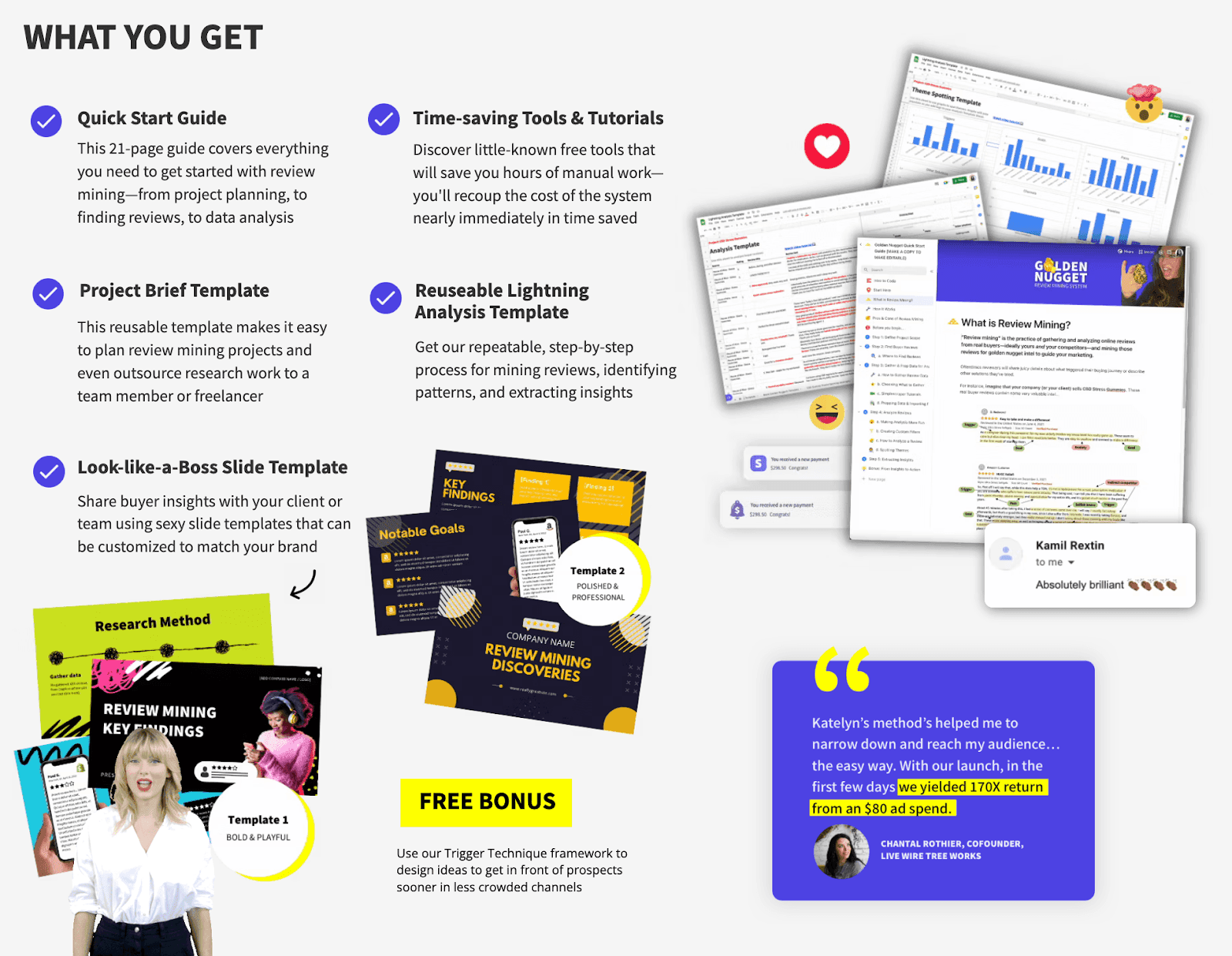
Add a new page for your ebook using whatever platform you use to host your website (like WordPress). If you don’t want to use your website, host your ebooks via an external platform like
Gumroad, as
Shreya Pattar does.
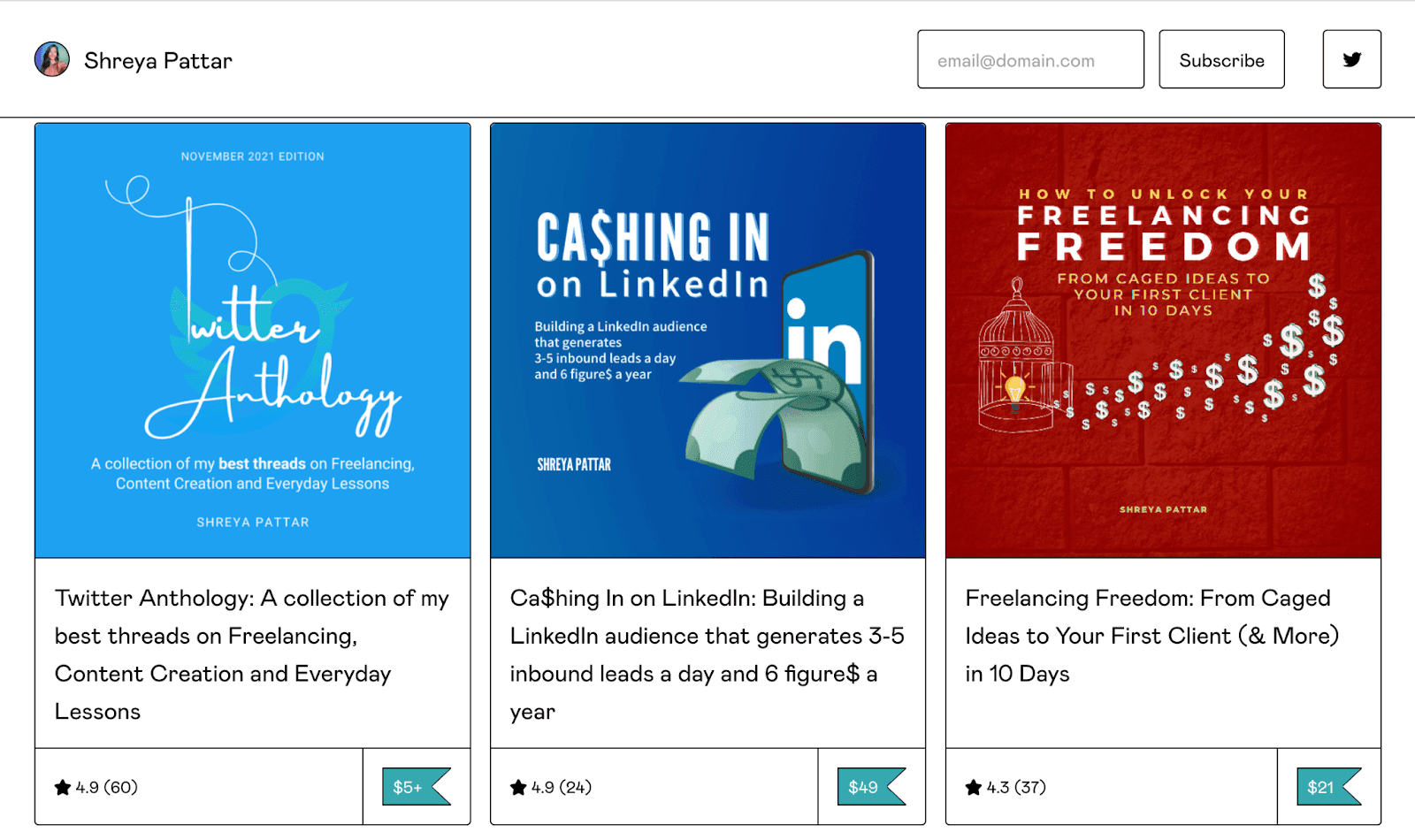
But remember, platforms like these take a cut of each sale you generate through them.
It might look like you’re all done, but one crucial step remains.
Before you dust off your shoulders, a vital bit is left:
Promoting your ebook. Sharing it on
social media, including it in your
email campaigns, asking experts who contributed to share it, and more. It’s not the most glamorous work, but it’s better than crickets in your ebook downloads, right?
Here’s how to distribute and promote your ebook, so you get the most bang for your sweat (and tears):
- Run Facebook or YouTube ads if they are a part of your strategy
- Repurpose your ebook content for social media, guest posts, and emails
- Share your ebook on Slack channels, Reddit communities, and Quora answers
It might sound simple, but you’re never “done” promoting your ebook. You want to keep mentioning it where it's relevant and constantly talk about it to give it more visibility. The other alternative is letting it die a slow death.
See how Kaleigh Moore plugs her
ebook on writing better wherever it naturally fits—whether that’s her
newsletter or
Twitter.
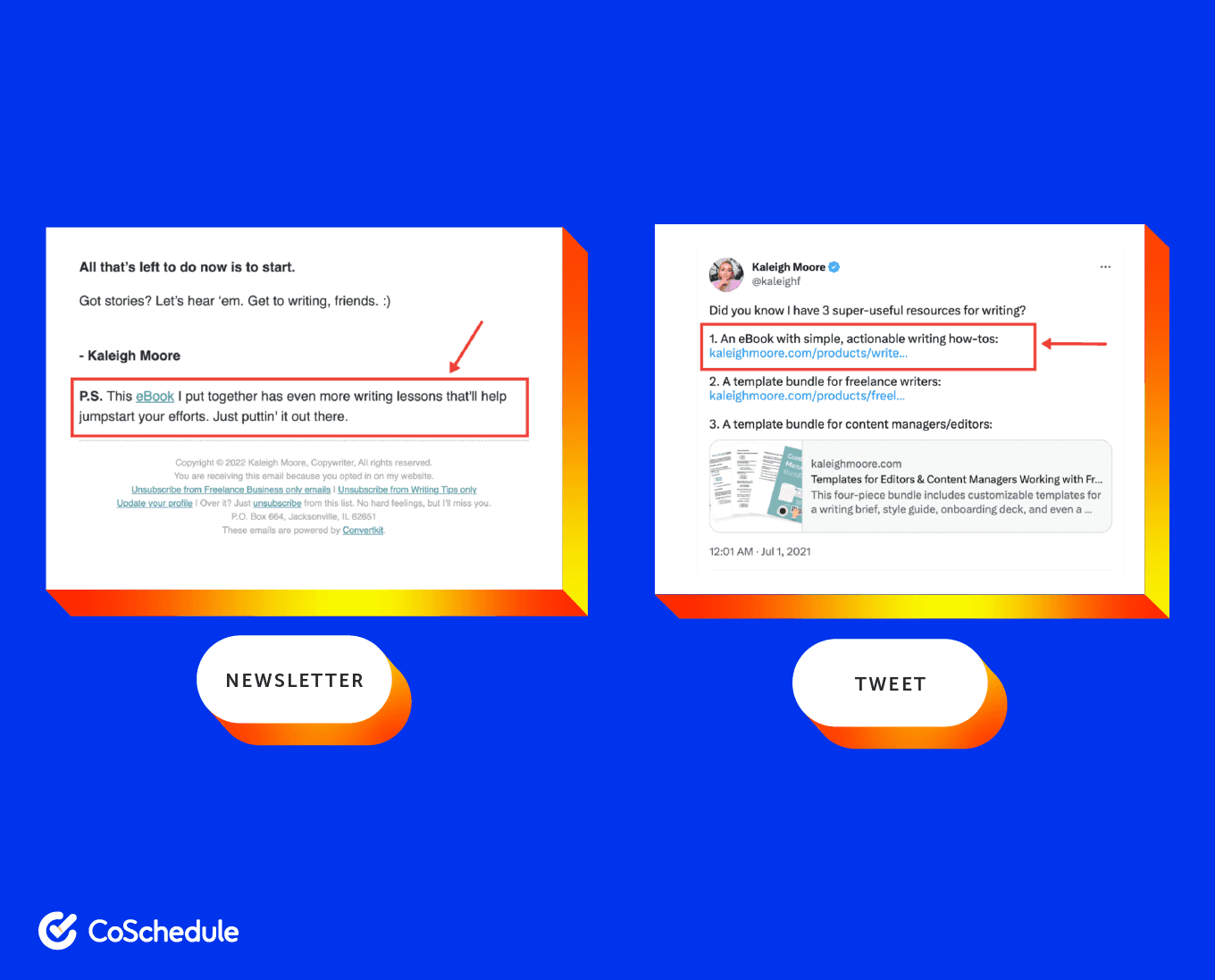
How to ensure your ebook is getting promoted? By making it a part of your content calendar (along with the other eight steps) using
CoSchedule’s marketing calendar.
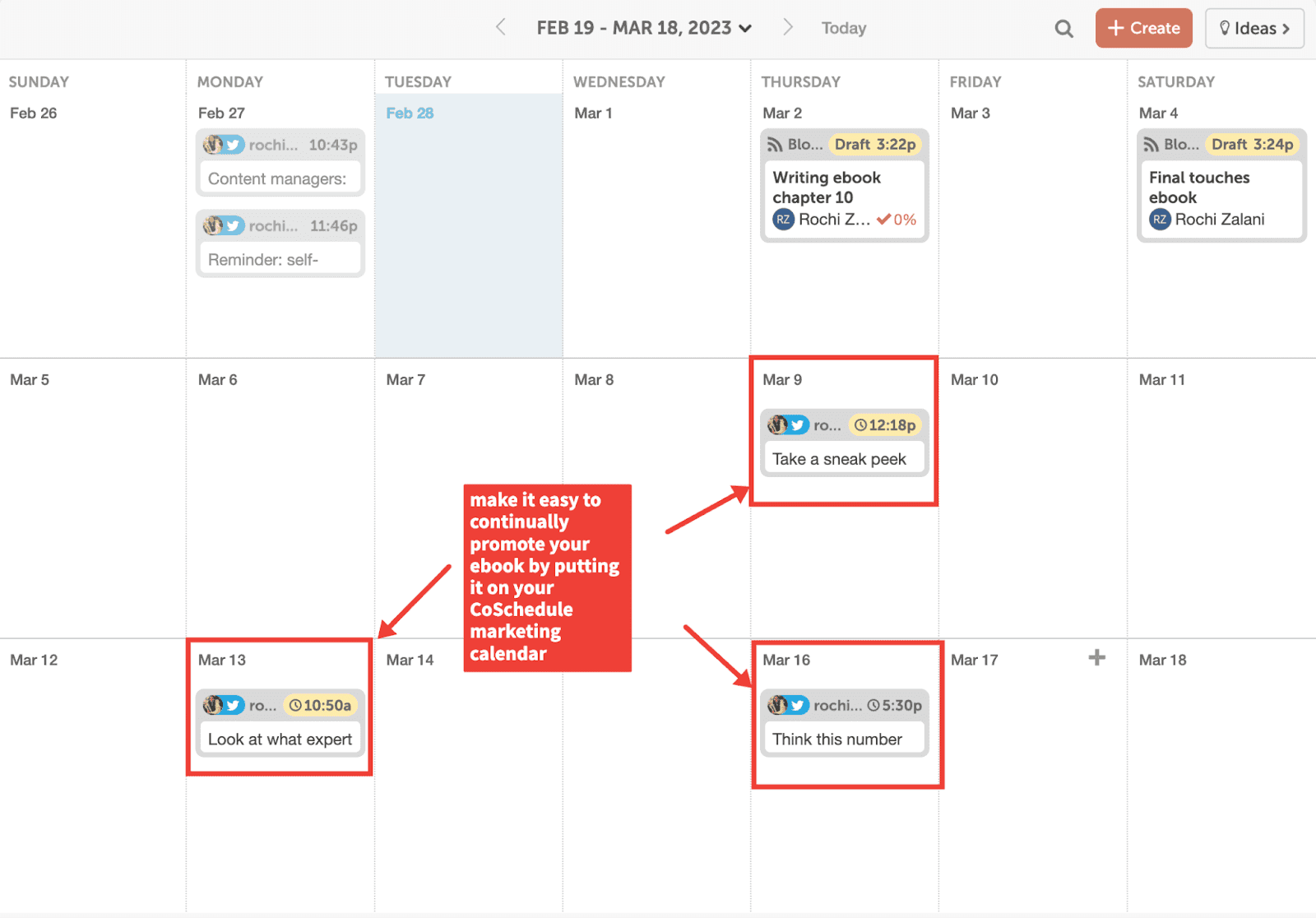
Having it on your
marketing calendar ensures promotion doesn’t slip through the cracks. The best part? Collaborating and managing all the moving parts in CoSchedule’s marketing calendar is super easy.
Ready, Set, Ebook!
Ebooks are one of the easiest ways to repurpose old content, produce a
lead magnet, and share your expertise with your target customers.
Armed with these nine steps, you’re ready to write an excellent ebook that doesn’t just get downloaded—but gets read, used, referenced, and shared too.
Use CoSchedule Marketing Calendar To Organize Your eBook Process
CoSchedule Marketing Calendar is a marketing work management solution for agile marketers. The platform serves as a digital marketing repository, increasing visibility among all
marketing operations to easily plan and manage work.
And when it comes to writing an ebook, the process has never been simpler. In 8 steps, here’s how:
1. Create A New Project
To add a new Project in Marketing Calendar, click Create in the right hand corner.
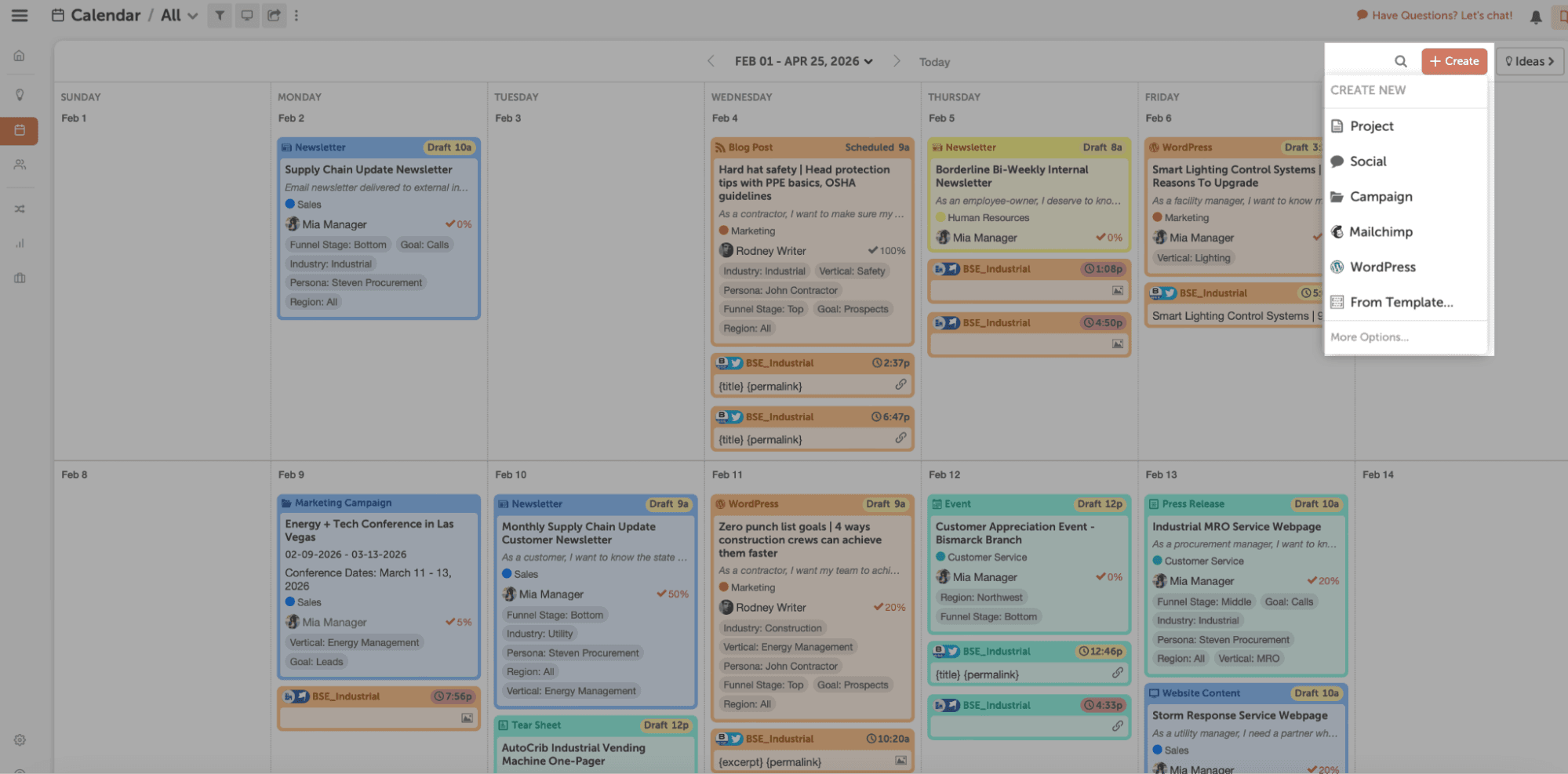
Then, fill out a Project card to break down the details. Add the project name, project type, publish date, color label, and tags.
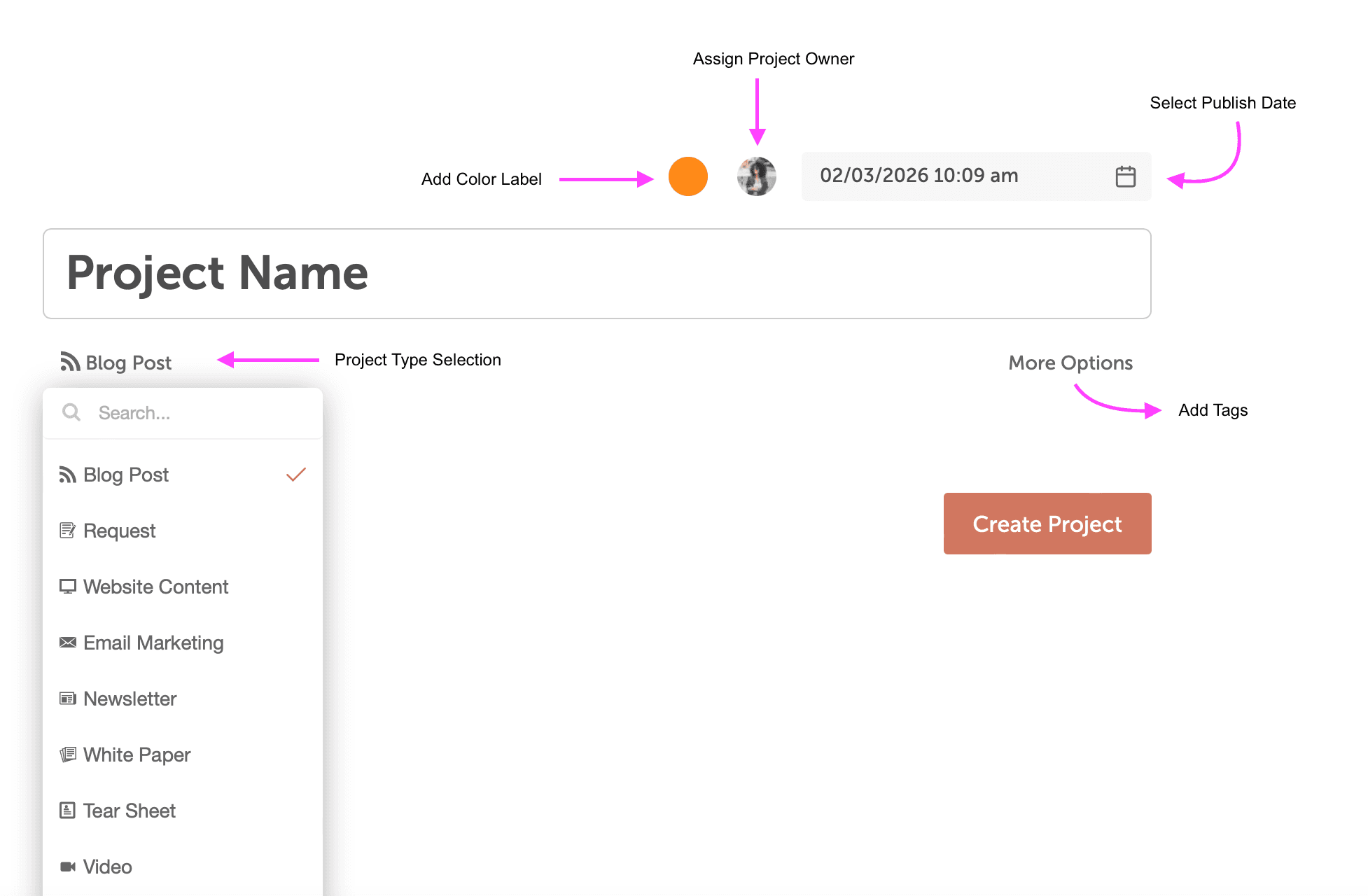
2. Add A Checklist
Once a project has been created, add a task checklist to outline responsibilities and streamline team handoffs. The tasks included should support and help complete a larger, strategic goal. A task list for an ebook may include:
Write creative brief (project owner)
Project kickoff with writer (project owner)
Write outline (writer)
Review outline (project owner)
Write first draft (writer)
Review (project owner)
Accept corrections and finalize eBook copy (writer)
Design graphics (designer)
Review graphics (project owner)
Finalize graphics (designer)
Stage ebook (project owner)
Schedule ebook (project owner)
The outline above would translate to the following:
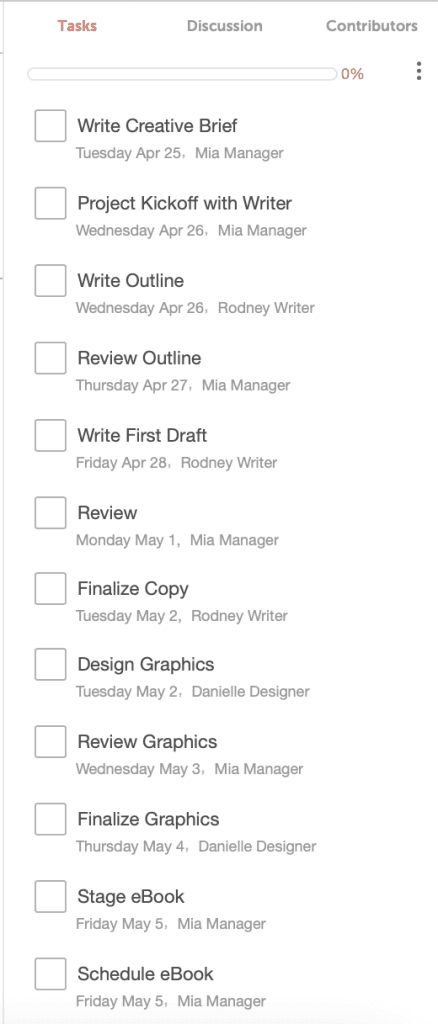
Marketing Suite additionally offers default task templates for articles, blog posts, newsletters, email marketing, and podcasts.
After creating a Project, select a premade template, and watch tasks auto populate. Edit the existing tasks by deleting, adding, or tweaking the to-dos to make them work for you.
3. Create It All In One Place
To prevent toggling between different platforms, use
Project Attachments to connect all ebook files to a singular Project. These attachments promote organization and allow any team member to jump in and begin working, increasing team productivity and efficiency.
Typically, at least three types of attachments are needed for ebooks:
- eBook Copy: Connect a WordPress, Text Editor, Google Doc, or Word Document integration to attach and share drafted copy.
- eBook Graphics: Add all necessary image and video files, including inline graphics, cover art and social promotion images.
- Social Campaign: Create a social campaign to promote a published eBook on social media.
To connect an integration to CoSchedule Marketing Suite, click the
Settings button on the left-side panel.
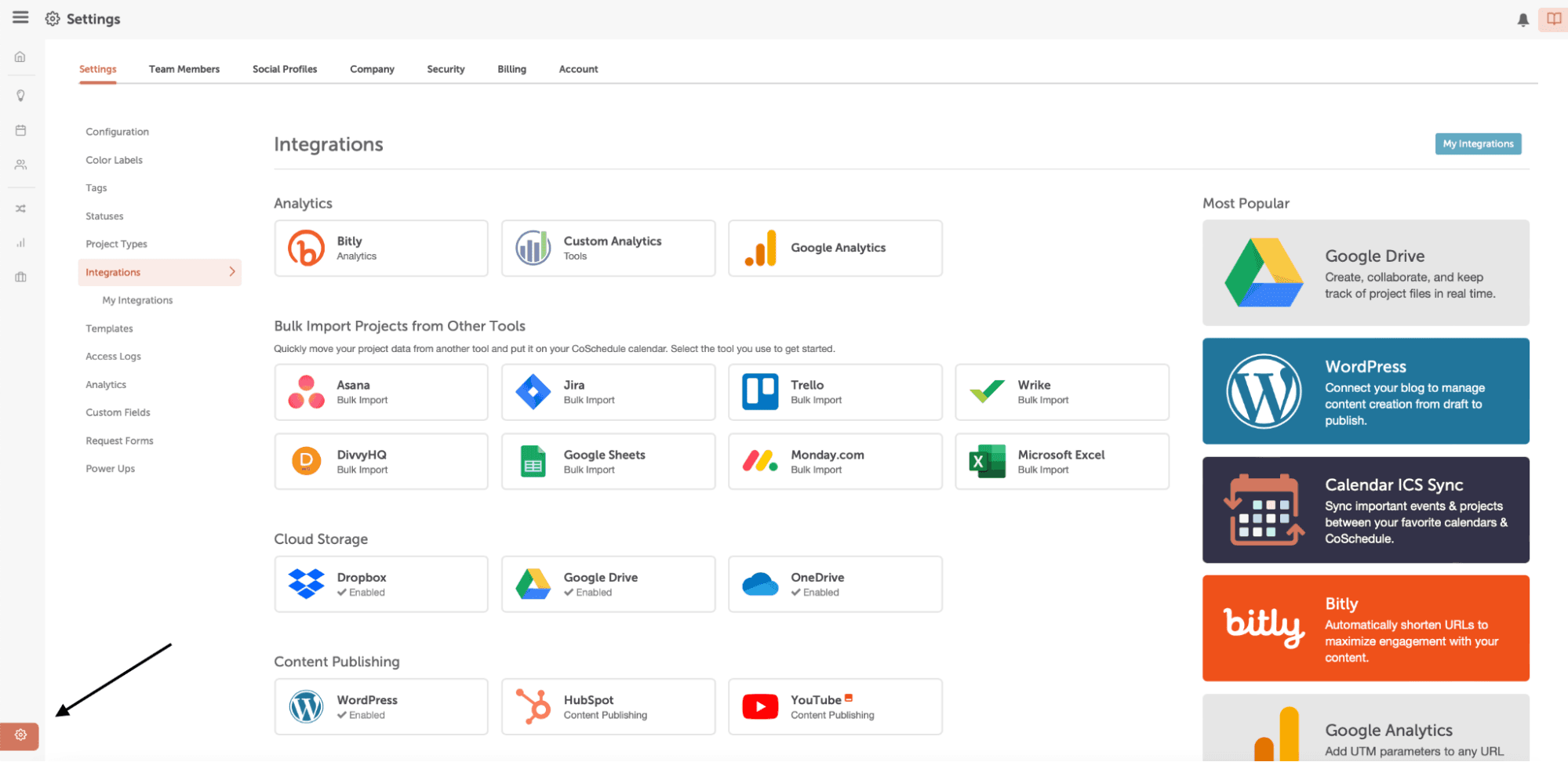
Then, select
Integrations from the menu list.
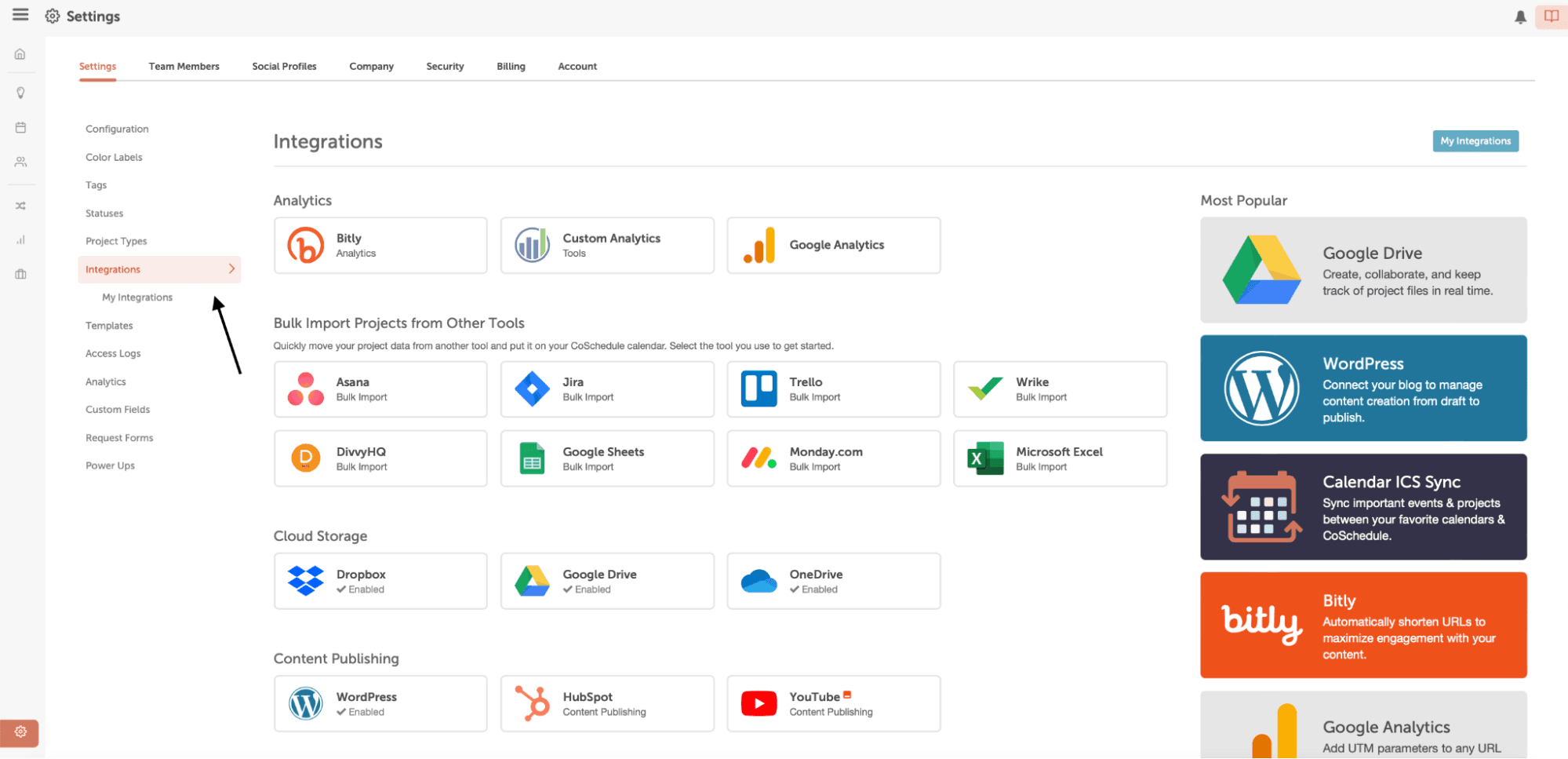
Choose among CoSchedule’s 50+ integrations and begin facilitating the sharing of processes.
Popular Software Integrations Include:
-
- Slack
- Google Drive
- Microsoft Teams
- Dropbox
- Adobe Creative Cloud
- WordPress
- Salesforce
- Mailchimp
4. Optimize The Headline
Use
Headline Studio to draft, analyze, and improve an eBook title to grab reader attention and maximize click-through rates.

5. Schedule The eBook
Um, finally?! Whenever you’re ready to schedule your finished project, click
Status and choose
Scheduled.

6. Promote On Social Media
Promote your newly published ebook on social media using a
Social Campaign.
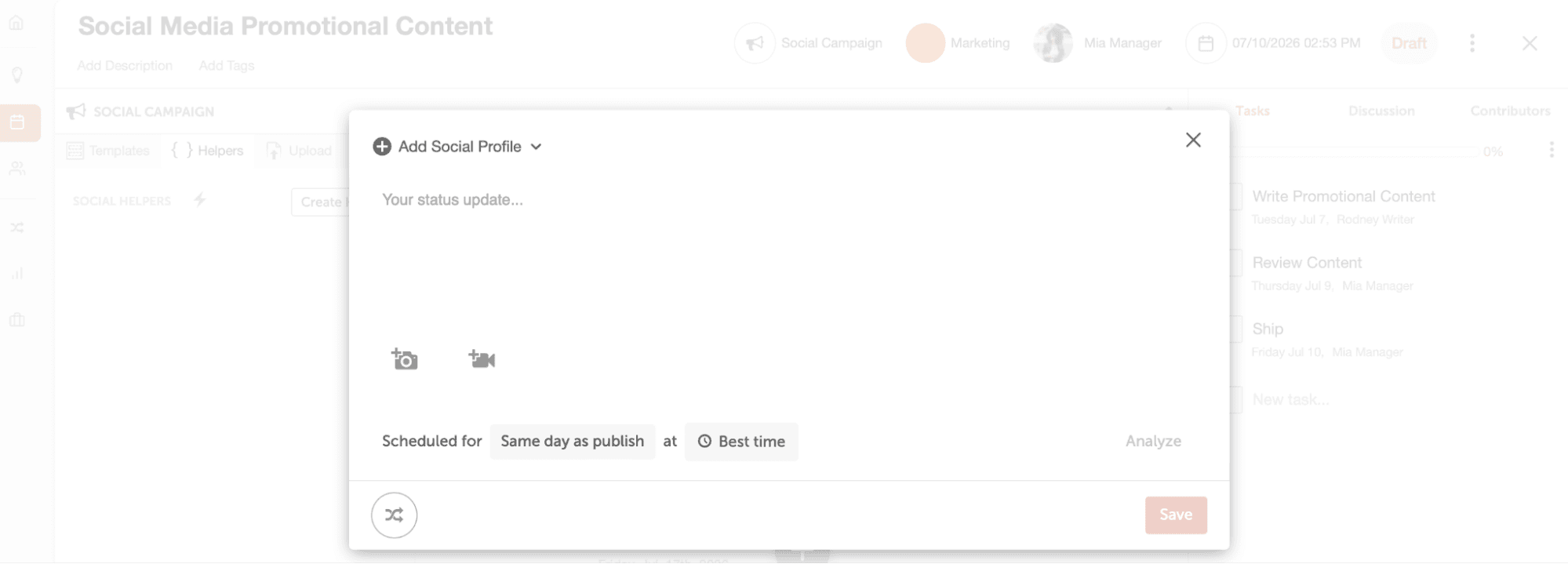
Social Campaigns are a simple way to create and publish multiple social messages, across different platforms over a specific period of time.
When the ebook goes live, social messages from the campaign will automatically be set to publish, streamlining the social process.
Additionally, use in conjunction
Social Templates to draft these messages in seconds.
7. Rest Easy Knowing Marketing Suite Has It From Here
Once the status has been manually updated to Scheduled, the ebook will go live on the date and time selected. If you’re using the WordPress integration, CoSchedule will automatically publish the content to WordPress on the date and time selected.
If plans change, simply
drag and drop any project to a new date. All connected tasks and social messages will automatically reschedule to coincide with it.
Or schedule your Marketing Suite demo.
 Anyone can write an ebook. But not everyone can write an ebook that gets read. That’s a big problem since ebooks have the highest conversion rate in written content, according to GetResponse’s Best Lead Magnets Study.
In this article, I’ll tell you how to write an ebook that’s read from cover to cover and entices action from your target buyers.
Nine steps. Let’s get into it!
Anyone can write an ebook. But not everyone can write an ebook that gets read. That’s a big problem since ebooks have the highest conversion rate in written content, according to GetResponse’s Best Lead Magnets Study.
In this article, I’ll tell you how to write an ebook that’s read from cover to cover and entices action from your target buyers.
Nine steps. Let’s get into it!
 Check out more from Step Smith on Twitter.
The result? Pre-sales totaling 411 orders for $10,120 before launch. In this case, she produced something her audience truly cared about and wanted— so much so they were willing to purchase before release.
Don’t make this mistake: Doing audience research means finding a topic that—
a) Your target customers care about
b) Can organically imbibe your product
c) You have solid expertise in
The high-converting ebook topic is the golden spot meeting all three criteria.
Check out more from Step Smith on Twitter.
The result? Pre-sales totaling 411 orders for $10,120 before launch. In this case, she produced something her audience truly cared about and wanted— so much so they were willing to purchase before release.
Don’t make this mistake: Doing audience research means finding a topic that—
a) Your target customers care about
b) Can organically imbibe your product
c) You have solid expertise in
The high-converting ebook topic is the golden spot meeting all three criteria.
 Don’t aim to solve customer problems you have no expertise in (it’ll show) or something your product/service can’t help with (it won’t convert readers to buyers).
With your topic decided, it’s time to brainstorm some headlines.
Don’t aim to solve customer problems you have no expertise in (it’ll show) or something your product/service can’t help with (it won’t convert readers to buyers).
With your topic decided, it’s time to brainstorm some headlines.
 The perfect headline is:
The perfect headline is:
 But writing a compelling headline is no piece of cake. I’ve written plenty of ebooks without a hiccup but pulled my hair out trying to write its perfect title. After all, it's the headline that determines whether or not you get an exclusive spot in your customer’s inbox. There’s immense pressure to get it right.
Enter a saving grace: CoSchedule’s Headline Analyzer. This tool gives a score to your headlines based on word and character count, headline type, word balance, skimmability, clarity, and so much more.
But writing a compelling headline is no piece of cake. I’ve written plenty of ebooks without a hiccup but pulled my hair out trying to write its perfect title. After all, it's the headline that determines whether or not you get an exclusive spot in your customer’s inbox. There’s immense pressure to get it right.
Enter a saving grace: CoSchedule’s Headline Analyzer. This tool gives a score to your headlines based on word and character count, headline type, word balance, skimmability, clarity, and so much more.
 The best part? There’s a word bank for every kind of word you’d need within the tool.
With your topic and headline under your belt, it’s time to dive into the contents of your ebook.
The best part? There’s a word bank for every kind of word you’d need within the tool.
With your topic and headline under your belt, it’s time to dive into the contents of your ebook.
 The chapters you choose lay the groundwork for your table of contents, enabling your readers to skim through and find precisely the bits they’re looking for.
Organizing your ebook into chapters also helps you get direction on how to proceed and tackle the project section by section.
The chapters you choose lay the groundwork for your table of contents, enabling your readers to skim through and find precisely the bits they’re looking for.
Organizing your ebook into chapters also helps you get direction on how to proceed and tackle the project section by section.
 Next, start filing content inside your H2s and H3s. You might find you can recycle some old blog post content to fit into a section. Kinsta regularly does this—for example, they used the blog content about WordPress security in their Securing Client Sites ebook.
Next, start filing content inside your H2s and H3s. You might find you can recycle some old blog post content to fit into a section. Kinsta regularly does this—for example, they used the blog content about WordPress security in their Securing Client Sites ebook.
 You can easily repurpose any piece of content you have for your ebook:
You can easily repurpose any piece of content you have for your ebook:
 If you’re missing visuals, work with a designer or use tools like Canva to create graphics on your own (it has tons of ebook templates for your cover design too). Remember to infuse your brand colors into it and employ some color psychology to keep readers glued to your ebook.
A visually engaging ebook filled with images, data, and expert insights will always triumph over a bland ebook with amazing content but none of the extra elements. Your buyers are visual creatures who want a treat for their brains and their eyes.
If you’re missing visuals, work with a designer or use tools like Canva to create graphics on your own (it has tons of ebook templates for your cover design too). Remember to infuse your brand colors into it and employ some color psychology to keep readers glued to your ebook.
A visually engaging ebook filled with images, data, and expert insights will always triumph over a bland ebook with amazing content but none of the extra elements. Your buyers are visual creatures who want a treat for their brains and their eyes.
 However, if you’re giving readers an ebook for their Kindle or other e-reader devices, it’s best to convert it to a MOBI and EPUB format using Convertio.
However, if you’re giving readers an ebook for their Kindle or other e-reader devices, it’s best to convert it to a MOBI and EPUB format using Convertio.
 Add a new page for your ebook using whatever platform you use to host your website (like WordPress). If you don’t want to use your website, host your ebooks via an external platform like Gumroad, as Shreya Pattar does.
Add a new page for your ebook using whatever platform you use to host your website (like WordPress). If you don’t want to use your website, host your ebooks via an external platform like Gumroad, as Shreya Pattar does.
 But remember, platforms like these take a cut of each sale you generate through them.
It might look like you’re all done, but one crucial step remains.
But remember, platforms like these take a cut of each sale you generate through them.
It might look like you’re all done, but one crucial step remains.
 How to ensure your ebook is getting promoted? By making it a part of your content calendar (along with the other eight steps) using CoSchedule’s marketing calendar.
How to ensure your ebook is getting promoted? By making it a part of your content calendar (along with the other eight steps) using CoSchedule’s marketing calendar.
 Having it on your marketing calendar ensures promotion doesn’t slip through the cracks. The best part? Collaborating and managing all the moving parts in CoSchedule’s marketing calendar is super easy.
Having it on your marketing calendar ensures promotion doesn’t slip through the cracks. The best part? Collaborating and managing all the moving parts in CoSchedule’s marketing calendar is super easy.
 Then, fill out a Project card to break down the details. Add the project name, project type, publish date, color label, and tags.
Then, fill out a Project card to break down the details. Add the project name, project type, publish date, color label, and tags. 

 Then, select Integrations from the menu list.
Then, select Integrations from the menu list.
 Choose among CoSchedule’s 50+ integrations and begin facilitating the sharing of processes.
Popular Software Integrations Include:
Choose among CoSchedule’s 50+ integrations and begin facilitating the sharing of processes.
Popular Software Integrations Include:


 Social Campaigns are a simple way to create and publish multiple social messages, across different platforms over a specific period of time.
When the ebook goes live, social messages from the campaign will automatically be set to publish, streamlining the social process.
Additionally, use in conjunction Social Templates to draft these messages in seconds.
Social Campaigns are a simple way to create and publish multiple social messages, across different platforms over a specific period of time.
When the ebook goes live, social messages from the campaign will automatically be set to publish, streamlining the social process.
Additionally, use in conjunction Social Templates to draft these messages in seconds.


